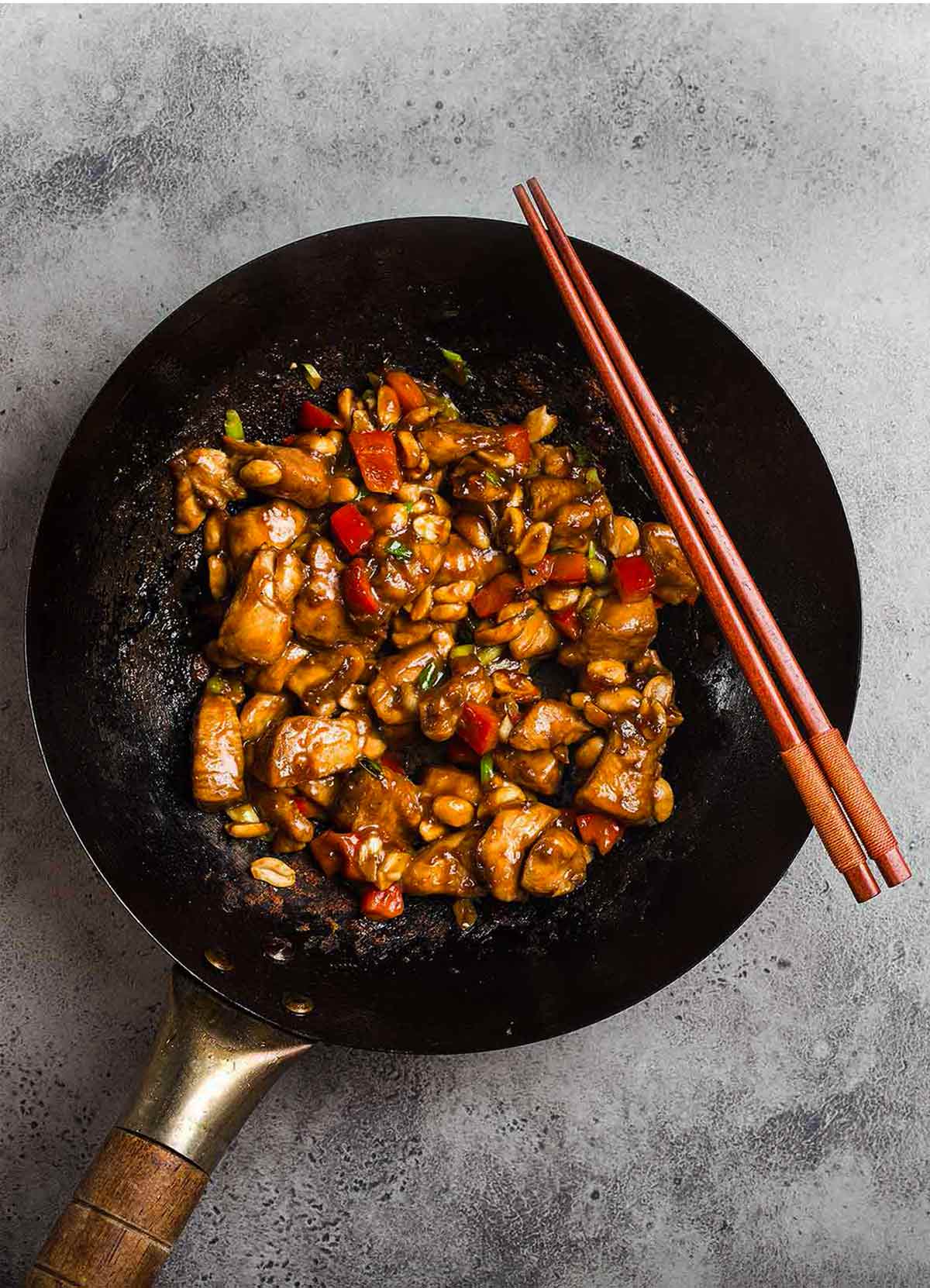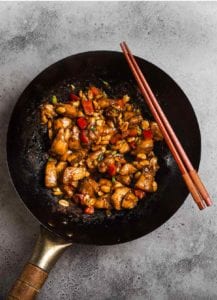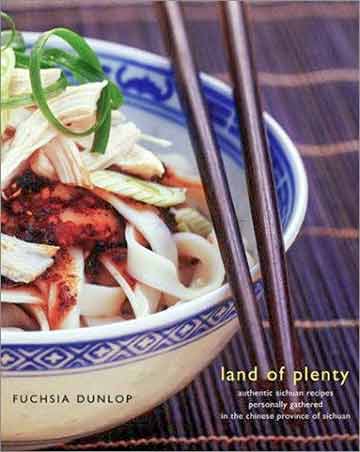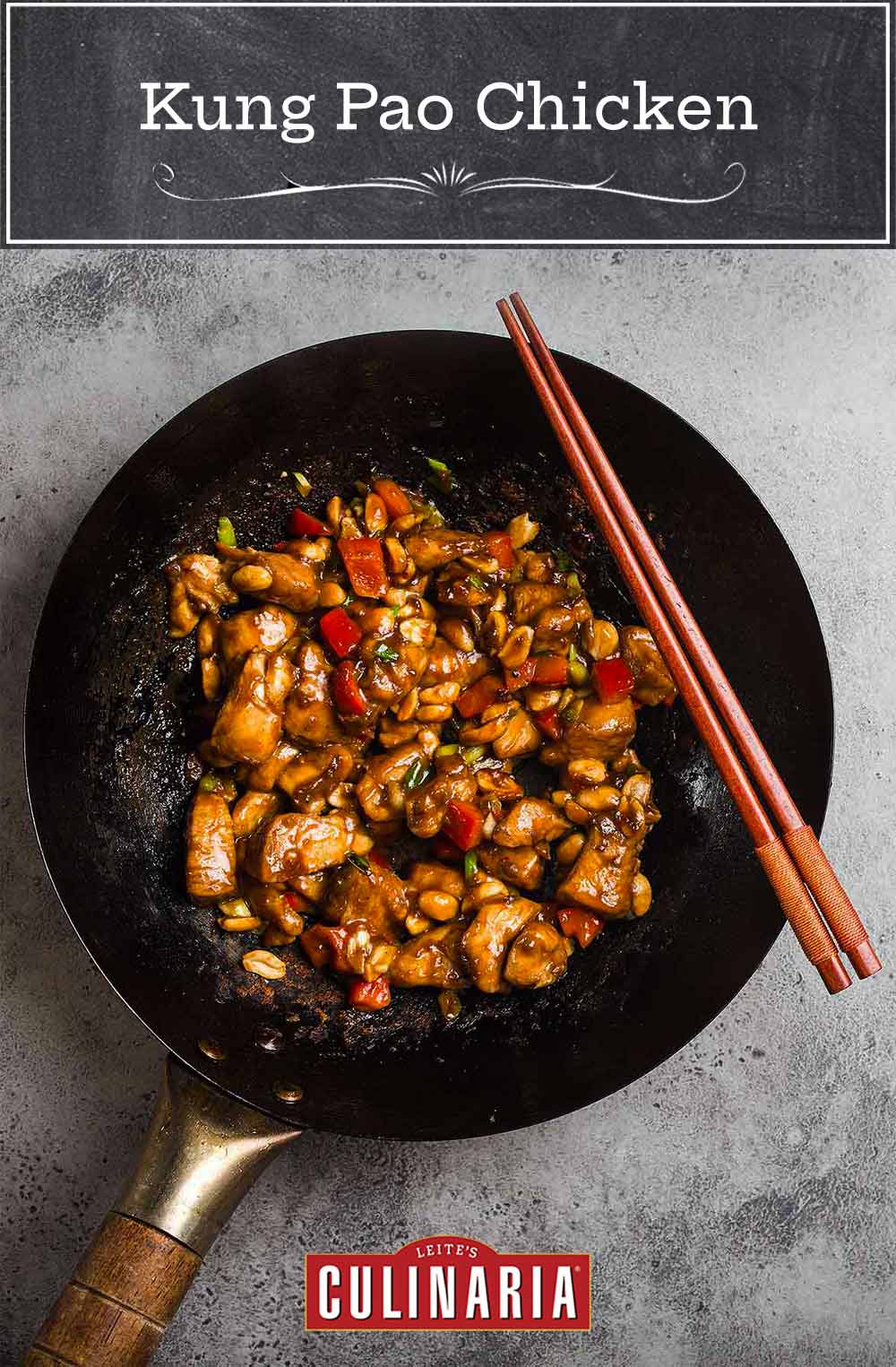
Call it laziness. Call it downright knee-shaking fear. I’ve studiously avoided cooking Chinese dishes in my home ever since…well, forever.
After all, I do live in New York City, even though I deign to stay there only a few days a month. And that means delivery. All I have to do is pick up the phone, and in less time than it takes for someone else to get offed on “The Last of Us,” I have all the Chinese food I could possibly want.
But a curious thing happened on the way to MenuPages.com. I’ve either become a better cook or Chinese takeout has gotten worse on the Upper West Side. I think it’s probably the latter, as friends who don’t even cook think the food has tanked.
And that has left a gaping hole in my cravings. I was waving 再见 (goodbye) to cold sesame noodles, pork buns, hot and sour soup, General Tso’s Chicken, beef and broccoli, egg foo young, and Gong Bao (aka Kung Pao) chicken. Out of sheer desperation, I manned up to the wok, placed a huge order with Amazon.com for ingredients, and went for it.
This Gong Bao chicken is the first dish I made from the formidable writer and Chinese culinary expert Fushia Dunlop. In fact, it’s the first Chinese recipe I’ve ever made. And it worked perfectly out of the (takeout) box, so to speak. It smacked of the flavors I so love, but without all that gloppiness attendant with takeout Chinese.
Now, as you know, The One doesn’t like spicy foods (yes, yes, a problem), and I know this recipe has been described as being so hot it approaches the “hiccup threshold.” So I cut back on the peppers (I didn’t use Sichuan peppers but rather substituted piri-piri peppers) to great effect. It all came together in no time–even the prep work, which can be daunting in Chinese cooking–was a breeze.
I had everything ready before The One came home to Connecticut. When he walked in, I just revved up the skillet and started. Ten minutes later, we were seated at the dining room table. The only thing I’d do differently next time would be to use a nonstick pan. I don’t own a traditional wok (although I’m now eyeing them), and the sauce began to stick to the skillet due to the sugar. Beyond that, it was flawless.
Gong Bao chicken has almost succeeded in toppling spaghetti alla carbonara as my top a go-to weeknight dish (sorry, Italy). We loved it so much, we’re serving it to guests this week. Now all I have to do is learn to speak Chinese (see the “How To Pronounce Kung Pao Chicken” note below), and I’ll be set.
How to pronounce Kung Pao chicken
Curious how to properly pronounce the classic Chinese dish you’re about to make? We certainly were. In seeking the pronunciation, we came to find that Kung Pao is sorta the Americanized slang for Gong Bao chicken, which is actually short for Gong Bao Ji Ding. Here’s its proper pronunciation. (Say again? We had to listen several times to nail it, so don’t feel bad if you don’t get it on the first try.)
Interested to learn more about the history of this dish? Author Fuschia Dunlop explains:
“This dish has the curious distinction of having been labeled as politically incorrect during the Chinese Cultural Revolution. It’s named after a late Qing Dynasty (late 19th century) governor of Sichuan, Ding Baozhen—Gong Bao was his official title—who is said to have particularly enjoyed eating it.
“No one can quite agree on the details of the dish’s origins: Some say it was a dish Ding Baozhen brought with him from his home province of Guizhou; others that he ate it in a modest restaurant when he went out in humble dress to observe the real lives of his subjects; still others, rather implausibly, that his chef invented the finely chopped chicken dish because Ding Baozhen had bad teeth.
“Whatever the truth of its origins, its association with an imperial bureaucrat was enough to provoke the wrath of the Cultural Revolution radicals, and it was renamed ‘fast-fried chicken cubes’ (hong bao ji ding) or ‘chicken cubes with seared chiles’ (hu la ji ding) until its political rehabilitation in the 1980s.”

Kung Pao Chicken With Peanuts
Ingredients
For the marinade
- 1 1/2 teaspoons potato flour or 2 1/4 teaspoons cornstarch
- 1/2 teaspoon salt
- 2 teaspoons light soy sauce
- 1 teaspoon Shaoxing rice wine or medium-dry sherry
- 1 tablespoon water
- 2/3 pound boneless chicken breasts, skin-on or skinless, cut into 1/2-to-3/4-inch (12- to 18-mm) chunks
For the sauce
- 1 tablespoon granulated sugar
- 3/4 teaspoon potato flour or 1 1/8 teaspoons cornstarch
- 1 teaspoon dark soy sauce
- 1 teaspoon light soy sauce
- 1 tablespoon Chinkiang or Chinese black vinegar
- 1 teaspoon toasted sesame oil
- 1 tablespoon homemade chicken stock or canned chicken broth, or water
For the Kung Pao chicken
- 3 garlic cloves, thinly sliced
- Ginger, (enough to equal the amount of garlic), thinly sliced
- 5 scallions, white and green parts, cut into 1/2-inch lengths
- 2 tablespoons peanut oil
- 1 handful of dried red chiles, (at least 10) preferably Sichuanese
- 1 teaspoon whole Sichuan peppercorns
- 2/3 cup roasted unsalted peanuts
Instructions
Make the marinade
- In a small bowl, combine the potato flour or cornstarch and salt. Slowly add the soy sauce, rice wine, and water, mixing constantly with a fork. (If using potato flour, the marinade will be more of a paste than a liquid marinade. That’s okay.)
- Add the chicken and stir to evenly coat the chicken. Let it stand at room temperature while you make the sauce.
Make the sauce
- In a small bowl, combine the sauce ingredients.
Make the Kung Pao chicken
- Snip the chiles into 2 or 3 pieces. Wearing rubber gloves, discard as many chile seeds as possible.
- Add 2 tablespoons oil to the wok and place it over high heat. When the oil is hot but not yet smoking, add the chiles and Sichuan peppercorns and stir-fry briefly until crisp and the oil is spicy and fragrant. Whatever you do, be mindful not to burn the chiles and pepper. You can remove the wok from the heat if necessary to prevent overheating.
☞ TESTER TIP: Keeping the peppercorns whole and the dried chiles in larger pieces allows the heat-averse eaters at your table to pick around them.
- Plop in the chicken pieces and cook, stirring constantly. As soon as the chicken cubes have separated, add the ginger, garlic, and scallions and continue to stir-fry for a few minutes until everything is fragrant and the chicken is cooked through. (You may want to slice into one of the larger pieces of chicken to make sure it's done.)
- Stir the sauce and then carefully swirl it into the wok, continuing to stir and toss. As soon as the sauce is warmed through and becomes thick and shiny, add the peanuts, stir to combine, and serve immediately.
Notes
Kung Pao Chicken Variations
Kung Pao Shrimp Or Pork You can substitute prawns (shrimp) or chunks of pork in place of the chicken. Kung Pao Chicken With Cashews Cashews can be used instead of the traditional peanuts for a slightly more grand-seeming version of this dish. Kung Pao Chicken With Whatever’s In Your Fridge We love this Kung Pao chicken recipe without changing a thing. However, if you’re the sort who prefers a little extra vegetable to make you feel a little more virtuous after having cold cereal for dinner last night, or if you happen to have some vegetables languishing in the fridge or canned items in the back of the pantry that you know you won’t use if they linger any longer, then go ahead and toss them in. Red bell peppers, water chestnuts, even asparagus, they all work here. Follow your bliss.
Nutrition
Nutrition information is automatically calculated, so should only be used as an approximation.
Recipe Testers’ Reviews
This Kung Pao Chicken is just like what’s on the menu at my favorite Szechuan restaurant. Rich, complex, not ridiculously spicy, and a perfect consistency for the sauce. Some of the ingredients aren’t standard issue in most American kitchens, but any reasonable Asian market should be able to help you out.
I was careful to remove most, if not all of the seeds from my dried chiles, as my wife doesn’t like things too hot. The “ma la” tongue-tingling sensation was just right; I think if the Szechuan peppercorns had been ground, it would have been out of control. Also, keeping the peppercorns whole and the dried chiles in larger pieces allows the heat-averse to pick around them.
As with many stir-fry recipes, it’s more work to prep than to cook, but this could easily be done on a weeknight once you have the specialty ingredients.
For me this was a real winner.
This Kung Pao chicken is a very flavorful dish that was a wonderful treat for a weekday meal. I used Guajillo peppers that gave a delicious flavor but weren’t too hot. The peanuts work well with the complex flavors of the different kinds of soy sauce, the rice vinegar, and the sesame oil.
My one suggestion is that there be a bit more vegetable mixed in. I used the white part of 5 large scallions but it would have benefitted from more or perhaps an onion cut into wide strips or chunks. I served it with a salad of spring lettuces with cut-up apple, which provided a nice balance with the chicken.












I made this as written the first night, excellent! The second night I made it with angel hair pasta cooked al dente and added at the end of step 6, above, stirring it in to the spices and chicken quite well before adding the sauce and then peanuts in step 7. Also amazing. This is a great recipe and organized very well for those not used to Asian stir-fry. Thanks, I look forward to adapting this recipe for shrimp next!
Matt, now that’s what I like to hear! I like your pasta riff, too. It sure is a great recipe, and it’s on our menu for the week between Christmas and New Year’s!